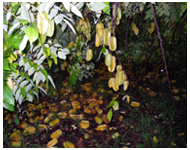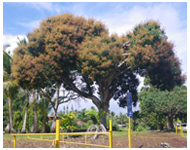Pilina Kai
'Ōlelo No'eau
Through living and being aware of ones surroundings, observations were made over thousands of years and that knowledge was passed on from one generation to the next. Through the resourcefulness of our kūpuna, relationships between various corresponding activities were observed and orally passed down to what we know them as today: 'ōlelo no'eau.
 .
. 
Pala ka hala. Momona ka hā'uke'uke.
When the hala is ripe, the hā'uke'uke are fat and ready to eat.
Pay attention to everything that is happening around you. What trees are fruiting and when? What plants have flowers and when? Is it hot or cold? When did the wind switch? Are there a lot of storms or do we have dry weather? These natural happenings can help us tell the time, the season, when to gather certain things, and when not to.
 .
. 
Pua ke kō! Kū mai ka he'e!
When the sugar cane tassle, the he'e are present.
Once you have made your observations and connected them to other things that are going on in the environment, create your own 'ōlelo no'eau to help in remembering. These 'ōlelo no'eau will help pass on your observations. They will also allow all of us to honor our küpuna by cotinuing the practice of composition.
PERSONAL 'ŌLELO NO'EAU








